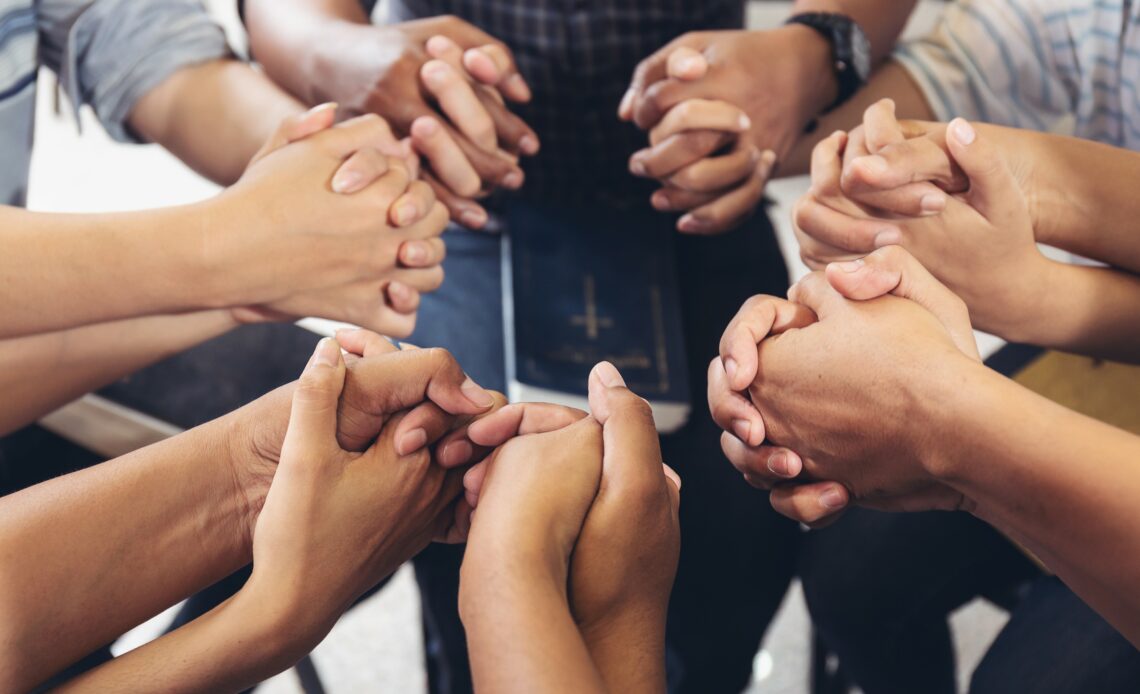In the world today, there is such great diversity among the people that it continually divides and distracts. Even within the church, various topics cause members of the same body to be divided and segregated. Basic practices and habits divide in ways that seemingly cause people to avoid one another and keep their distance.
If someone likes to spend his time gardening, he may not want to spend large amounts of time with someone who spends all his waking hours watching TV. If someone enjoys watching large amounts of TV, he may not want to spend much time with someone who always has his nose in a book. For the person who really enjoys reading, he may not want to spend much time with anyone because some of his favorite moments in life are reading a new story.
As we draw near to the doors of the church, someone who loves the new contemporary sound of worship may not want to set foot inside a church that only sings hymns. He may say the sound is too dull and outdated and that the people need to get with the times. On the other end, those who love the traditional form of worship may hold to the conviction that contemporary music sounds too much like the world’s music and is actually driven by emotion and not the Spirit of God.
As we continue to gaze into some of these lines that so often divide, we also see a church that, at times, draws hard lines around the spiritual gifts. Some would say gifts like prophecy and healing are no longer going on today. They would look at healing and God’s speaking through someone as something that could happen today.
Nevertheless, they believe that a person no longer has the actual “gifts” of prophecy or healing, as these were merely signs pointing to the validity of the message during the times of the apostles and the formation of God’s Word.
On the other end, a large group of people would say that all of the gifts are being used today and that there are still people who are modern-day prophets and have the gift of healing. They would look at passages like 1 Corinthians 13 and 1 Corinthians 1:7 and say that the Scriptures make it clear that all of the gifts will be in effect until Christ returns.
With all of these differing beliefs and practices, there seems to be so much division in both the world and the church. Even a quick look at people will reveal external differences. Are they short or tall? Are they black or white? Are they Asian or Hispanic? Are they Arab or Indian? What are their favorite foods? What are their favorite hobbies? How do they spend their time? The differences multiply as the questions are asked, and little by little, division occurs until eventually someone is on an island all by himself.
The lines have been drawn
One of the great passages of Scripture that sheds light on the topic of equality and unity in the midst of diversity is Ephesians 2:11-22. In this portion of Scripture, much division is highlighted from the outset. The apostle Paul lists the following as dividing points in the life of the individuals that were presently spoken of:
- From the beginning, Paul references his readers as “Gentiles.” This is a term that means those other than Israelites or Jews. In other words, everyone who is not a Jew would be deemed a Gentile. Paul starts by highlighting a term that divides: The people were Gentiles and not Jews.
- Then he transitions into another dividing point between the Gentile and the Jew, which was the covenant of circumcision that the Gentile was not a participant in.
- Another point which Paul highlights is that the Gentiles were separated from Christ, and the Jews were not. He expounds on this point by stating two facts:
a. The first of these two facts is that the Gentiles were alienated from the commonwealth of Israel. This was a clear line that divided. What Paul is saying by using the word commonwealth is that the Gentile had no relation to the state itself or its community. They were totally and entirely on the outside looking in. They were truly Gentiles and not Jews.
b. The second point is that these Gentiles were strangers to the covenants of promise. In the Old Testament, there are a great number of stories and time periods that chronicle the lives and history of the Jewish people. When other nations are inserted, they are in large part peripheral rather than the focus (or in some way, they are simply connected to the advancing story of the Israelites). In this context, a number of covenants and promises were made to the Jewish people. On this point, Paul hones in and says that the Gentiles were strangers to these covenants and promises. In other words, they did not take part in them. Once again, there was a clear line that divided the people.
Equality and unity in Christ
One of the greatest statements in the Bible is made after all of this division among two different groups of people. Often in Scripture, there are great tragedies that are presented but which in the end magnify the greatest of all solutions. Paul basically says, “But God.” He turns his readers away from the division that has occurred and the large number of differences amongst the people that have been in the forefront of their thoughts, and he tells them, “But now in Christ Jesus ye who sometimes were far off are made nigh by the blood of Christ. For he is our peace, who hath made both one, and hath broken down the middle wall of partition between us” (Eph. 2:13-14).
It is quite possible that there is not a single better illustrative picture of division than that of a wall itself. Walls were simply made to divide and to keep away. In the case of this “middle wall of partition,” what is being referenced is the outer wall of the Jewish temple.
During this time period, there were four distinct locations in the temple area. The holiest of places was reserved only for the Jewish priests. The second holiest place was reserved for Jewish priests and Jewish men. The third holiest of places was reserved for Jewish priests, Jewish men, and Jewish women (this was also the treasury where the woman in Scripture put in her small sum of money). These three places put together formed the temple.
Finally, the fourth part of the temple area was not in the temple at all but was actually just outer courts. Gentiles were allowed in this area, but strict warnings on the walls of the temple were placed to keep out these Gentile worshippers. Gentiles were warned in writing on these walls that they would be killed on the spot if they entered the temple. In every other situation that arose outside of the case of a Gentile entering the temple, if a Jew wanted someone dead, he had to get approval from the Roman authorities. However, this was the only case in which a Jew was actually justified by law to kill a man on the spot.
Truly, the lines were drawn and animosity ensued. The differences between the two people groups seemed too large to bridge, and even in the attempts to bridge the gap, the bridge would buckle under the weight.
However, in Christ, a solution was found. Christ did away with the temple; He abolished the law and the commands and the old way of worship, thus tearing down the dividing wall. He did not tear it down with a bulldozer, but He did make the temple obsolete.
Application
As one looks at the work of Christ bringing together the Jews and the Gentiles and making the two one, it is easy to see His heart for unity among people within the body of Christ. Jesus wants peace amongst believers, and He seeks to help believers look past their differences and embrace their similarities as all being a part of His body. A hand is not a foot, and a foot is not a shoulder. The differences are there, and they will continue to be, but nevertheless, there is a vital connection that remains and a Head that is determined to keep it that way.
Final prayer
Father, I thank You for the unity that is formed in Christ. Help me to embrace unity and peace with other believers. In Jesus’ name, Amen.


